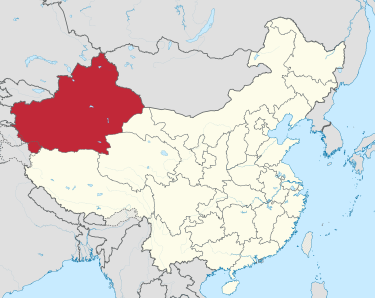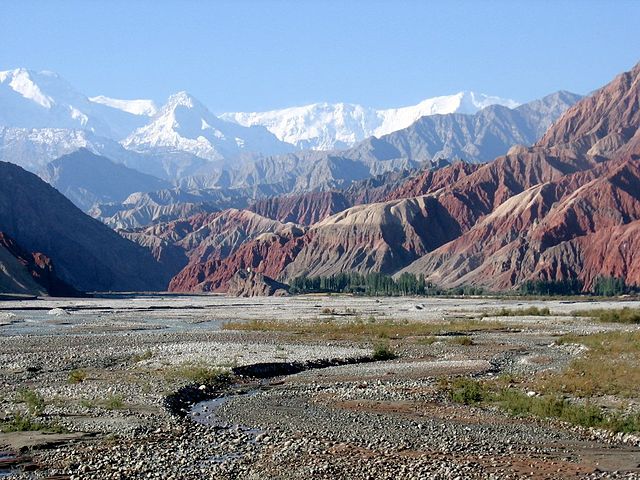Paul Hattaway: Xinjiang: China’s Gateway to the World
Paul Hattaway, Xinjiang: China’s Gateway to the World (United Kingdom: Piquant Editions, 2022), 359 pages, ISBN 9781803290058. This book is volume 6 of Paul Hattaway’s China Chronicles Series. It focuses on the province of Xinjiang, which is located in the northwest area of China, it serves as a passageway “between China and the rest of […]
 Paul Hattaway, Xinjiang: China’s Gateway to the World (United Kingdom: Piquant Editions, 2022), 359 pages, ISBN 9781803290058.
Paul Hattaway, Xinjiang: China’s Gateway to the World (United Kingdom: Piquant Editions, 2022), 359 pages, ISBN 9781803290058.
This book is volume 6 of Paul Hattaway’s China Chronicles Series. It focuses on the province of Xinjiang, which is located in the northwest area of China, it serves as a passageway “between China and the rest of the world” (page 1). It is the largest province in China and borders the countries of “India, Pakistan, Afghanistan, Tajikistan, Kazakhstan, Kyrgyzstan, Russia, and Mongolia” (page 2). The province began being called Xinjiang in 1759 when it was given this name by rulers who were part of the Qing Dynasty (pages 4, 21-22). The author also mentions other interesting facts about this province, including its population numbers, which, with one exception, have grown over the years (page 3), that Marco Polo visited this area (pages 6-8), and that Islam is believed to have entered the province in AD 708 (page 8). Xinjiang has been the entry point not only for Islam but for a number of other religions as well including Buddhism, Zoroastrianism, and Christianity (page 15). Islam spread in this area through the use of force (pages 24, 26). Hattaway says that the province has experienced great cruelty throughout the centuries (page 13). In early 2021 it was believed that there were about 15,000 mosques in the province, this is, at least in part, due to the presence of the Uyghurs (page 29).

Xinjiang Province within China.
Image: Wikimedia Commons
But the focus of the book, as is true of all the other books in the series, is the Christian history of the area. Hattaway says that the history in this province can be divided into two major eras. The first concerns the significant impact that Nestorian Christians had in the area from 7th century through to the 13th century, and the second is the spread of the faith in the last century and a half (page 13). The author further notes that Swedish believers carried on significant ministry in Xinjiang and that Muslims in this province came to faith in Christ, hundreds of them (pages 13-14). In the book he covers Catholic missions (pages 43-54) but he indicates that Catholics make up a very small part of Christians in Xinjiang (page 54). The majority of the text is given to a consideration of Protestant missions and native Chinese workers. Hattaway says that today there are approximately “twenty times as many church members” in Evangelical Christianity as in Catholicism (page 54). As readers work their way through the book, they will find that many of the chapters are given to consider particular decades of Christian history. There are chapters devoted to the 1890s (pages 55-65), 1900s-1910s (pages 66-77), 1920s (pages 101-116), 1930s (pages 124-135), 1940s (pages 153-161), 1950s-1960s (pages 196-203), 1970s-1980s (pages 204-216), 1990s (pages 217-230), 2000s (pages 231-253), and the 2010s (pages 273-281). In addition to these chapters there are others devoted to key missionaries who served in Xinjiang and important events that took place there.
One chapter is devoted to George Hunter who was born in 1861, he was a Scottish missionary who served in the northwest part of China for 57 years carrying on significant ministry to Muslims (page 78). Hunter was called the “Apostle of Turkestan” (page 78). He could preach in 7 different languages (page 82), did not like the limelight (page 78), and never married (page 79). It seems that he did not see a lot of conversions as a result of his ministry (page 85). However, he remained undeterred in the work of evangelism (page 87). He was a picture of commitment.
Not all of God’s heroes are household names.

This photograph of the Pamir mountains was taken near Karakoram Highway in Xinjiang.
Image: Wikimedia Commons
In addition to the chapters I have already mentioned there are some that focus on other topics as well. These included chapters on: The Modern Back to Jerusalem Movement (pages 254-272) and the Future of the Church in Xinjiang (pages 306-310). Throughout this book you will find the names of people who have engaged in Christian ministry in Xinjiang.
As is true of all of the volumes in the China Chronicles Series, this volume contains a wealth of pictures throughout its pages. It also contains extensive facts and figures in the tables found toward the back of the book. Paul Hattaway has once again brought to light some Christian history that we would likely not find on our own. This volume demonstrates that not all of God’s heroes are household names. Some have served very faithfully outside of the spotlight. Their life stories are truly challenging and inspiring.
Reviewed by John P. Lathrop
